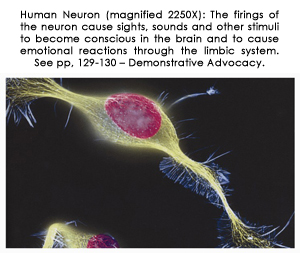Forward 1 (Excerpts): Dr. Seyone, M.D., FRCPC
To be human is to be emotional. This is a truism of all human interaction. Even individuals who appear unemotional are emotional as apathy itself is an emotion.  There is no way that a human being, whether a lawyer, judge, juror or for that matter any kind of examiner of the human condition, can exist without emotional reactions. To do so, would not be human.
There is no way that a human being, whether a lawyer, judge, juror or for that matter any kind of examiner of the human condition, can exist without emotional reactions. To do so, would not be human.
Emotion in human interaction is often communicated by language. It is also communicated in subtle ways that are not obvious to the individuals having the interaction. This often leads us to form opinions about individuals quickly without necessarily having to go through a whole series of "explicit" questions to try and understand the other individual.
In fact, as described in early chapters of the book, all thought is a matter of impulses between neurons supported emotionally through the limbic system (see the image at the top left of a magnified human neuron, the firing of which is the root of all thought and language). Therefore emotion and reason work together and language, as expression of thought, is a product of the two.
This then can lead to bias. Bias can be partially understood as the emotional undertone of a relationship communicated imperfectly by language. Bias, especially in legal relationships, can lead to difficulties in the attempted impartial administration of the Rule of Law. This is especially so if the decision maker is biased in a particular direction. This book, with captivating imagery and style, traces the difficulties of the distinction back to the time of Aristotle who said that law is "reason unaffected by desire".